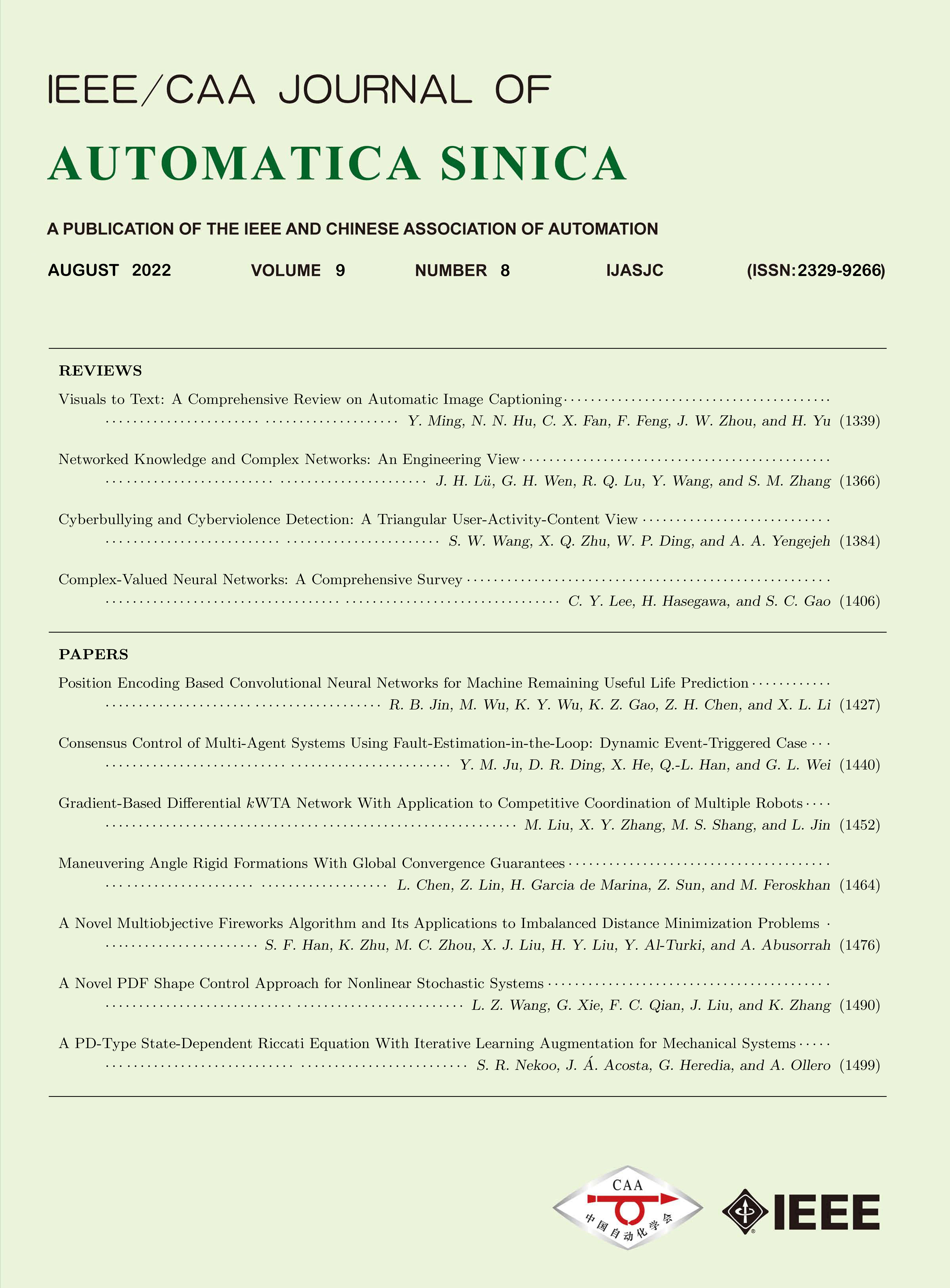 Volume 9
Issue 8
Volume 9
Issue 8
IEEE/CAA Journal of Automatica Sinica
| Citation: | C. L. Peng and J. Y. Ma, “Domain adaptive semantic segmentation via entropy-ranking and uncertain learning-based self-training,” IEEE/CAA J. Autom. Sinica, vol. 9, no. 8, pp. 1524–1527, Aug. 2022. doi: 10.1109/JAS.2022.105767 |

| [1] |
C. Sun, J. M. U. Vianney, Y. Li, L. Chen, L. Li, F.-Y. Wang, A. Khajepour, and D. Cao, “Proximity based automatic data annotation for autonomous driving,” IEEE/CAA J. Autom. Sincia, vol. 7, no. 2, pp. 395–404, 2020.
|
| [2] |
W. Wang, J. Shen, R. Yang, and F. Porikli, “Saliency-aware video object segmentation,” IEEE Trans. Pattern Anal. Mach. Intell., vol. 40, no. 1, pp. 20–33, 2018. doi: 10.1109/TPAMI.2017.2662005
|
| [3] |
T.-H. Vu, H. Jain, M. Bucher, M. Cord, and P. Pérez, “Advent: Adversarial entropy minimization for domain adaptation in semantic segmentation,” in Proc. IEEE Conf. Comput. Vis. Pattern Recognit., 2019, pp. 2517–2526.
|
| [4] |
K. Liu, Z. Ye, H. Guo, D. Cao, L. Chen, and F.-Y. Wang, “FISS GAN: A generative adversarial network for foggy image semantic segmentation,” IEEE/CAA J. Autom. Sinica, vol. 8, no. 8, pp. 1428–1439, 2021.
|
| [5] |
Y. Zou, Z. Yu, B. Kumar, and J. Wang, “Unsupervised domain adaptation for semantic segmentation via class-balanced self-training,” in Proc. Eur. Conf. Comput. Vis., 2018, pp. 289–305.
|
| [6] |
F. Pan, I. Shin, F. Rameau, S. Lee, and I. S. Kweon, “Unsupervised intradomain adaptation for semantic segmentation through self-supervision,” in Proc. IEEE Conf. Comput. Vis. Pattern Recognit., 2020, pp. 3764–3773.
|
| [7] |
T. Zhou, S. Qi, W. Wang, J. Shen, and S.-C. Zhu, “Cascaded parsing of human-object interaction recognition,” IEEE Trans. Pattern Anal. Mach. Intell., vol. 44, no. 6, pp. 2827–2840, 2022.
|
| [8] |
X. Lu, W. Wang, J. Shen, D. Crandall, and L. Van Gool, “Segmenting objects from relational visual data,” IEEE Trans. Pattern Anal. Mach. Intell., 2021. DOI: 10.1109/TPAMI.2021.3115815
|
| [9] |
M. Chen, H. Xue, and D. Cai, “Domain adaptation for semantic segmentation with maximum squares loss,” in Proc. IEEE Int. Conf. Comput. Vis., 2019, pp. 2090–2099.
|
| [10] |
Z. Zheng and Y. Yang, “Unsupervised scene adaptation with memory regularization in vivo,” in Proc. Int. Joint Conf. Artif. Intell., 2020, pp. 1076–1082.
|
| [11] |
Z. Zheng and Y. Yang, “Rectifying pseudo label learning via uncertainty estimation for domain adaptive semantic segmentation,” Int. J. Comput. Vis., vol. 129, no. 4, pp. 1106–1120, 2021. doi: 10.1007/s11263-020-01395-y
|
| [12] |
L. Chen, G. Papandreou, I. Kokkinos, K. Murphy, and A. L. Yuille, “Deeplab: Semantic image segmentation with deep convolutional nets, atrous convolution, and fully connected CRFs,” IEEE Trans. Pattern Anal. Mach. Intell., vol. 40, no. 4, pp. 834–848, 2017.
|
| [13] |
Y.-H. Tsai, K. Sohn, S. Schulter, and M. Chandraker, “Domain adaptation for structured output via discriminative patch representations,” in Proc. IEEE Int. Conf. Comput. Vis., 2019, pp. 1456–1465.
|
| [14] |
Y. Zou, Z. Yu, X. Liu, B. Kumar, and J. Wang, “Confidence regularized self-training,” in Proc. IEEE Int. Conf. Comput. Vis., 2019, pp. 5982–5991.
|
| [15] |
H. Tian, S. Qu, and Payeur, “A prototypical knowledge oriented adaptation framework for semantic segmentation,” IEEE Trans. Image Process., vol. 31, pp. 149–163, 2021.
|